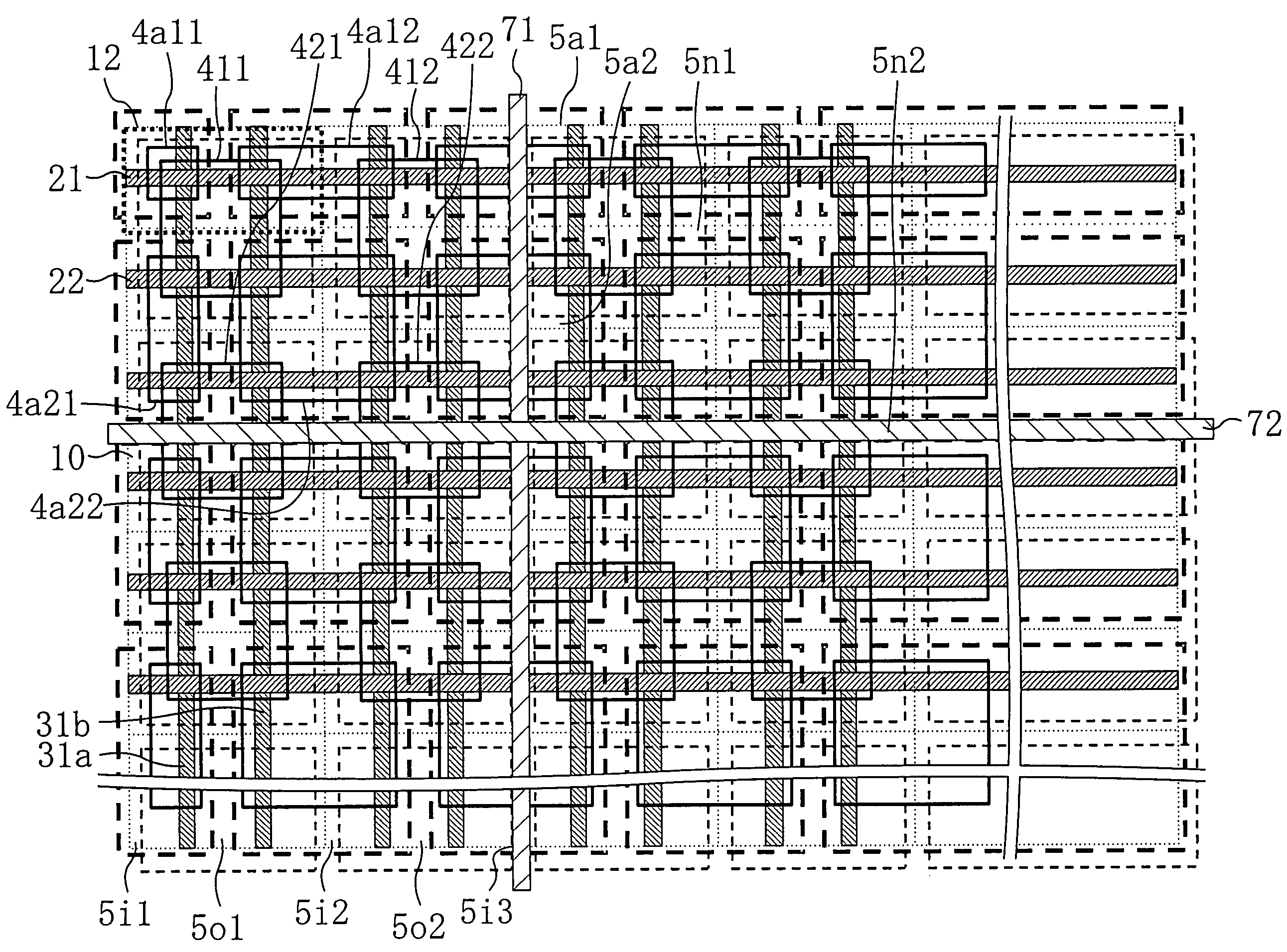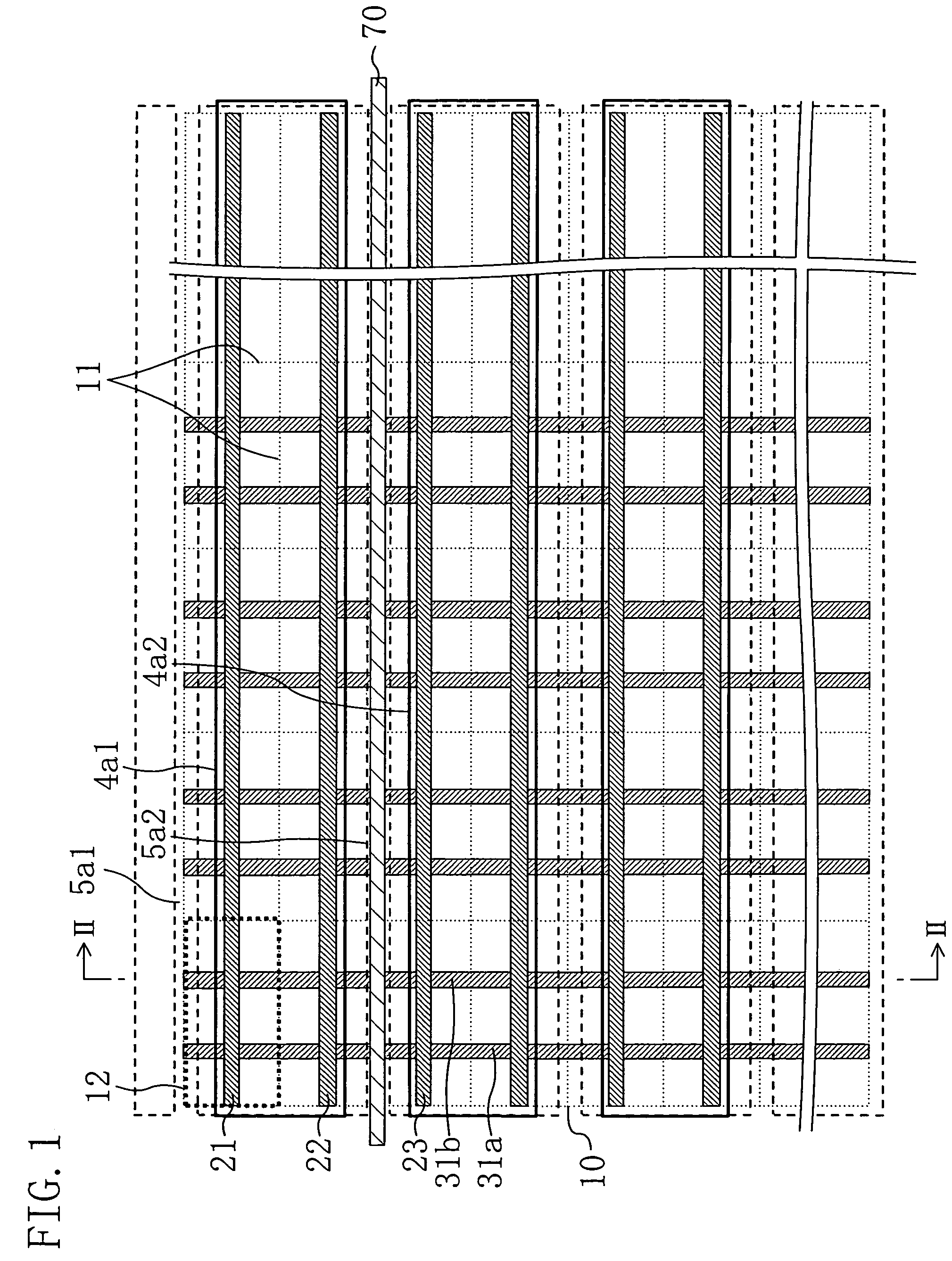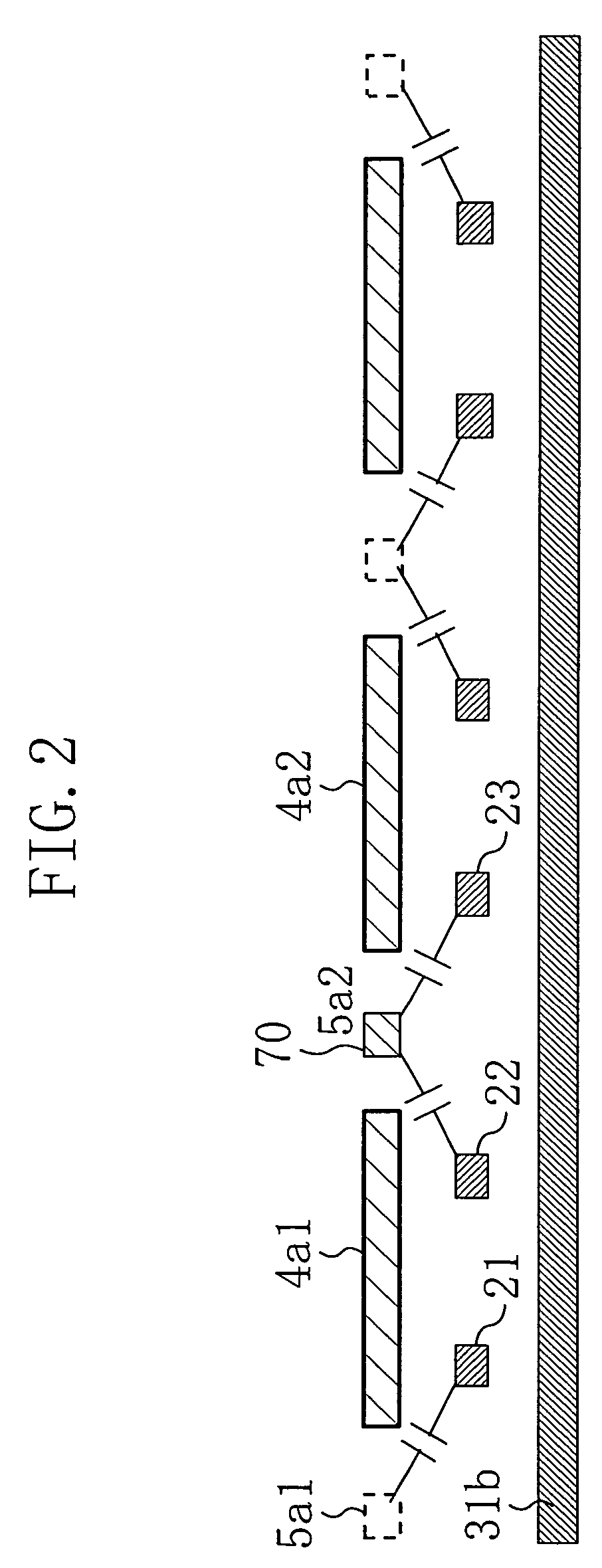Semiconductor device having a layout configuration for minimizing crosstalk
a layout configuration and semiconductor technology, applied in semiconductor devices, digital storage, instruments, etc., can solve the problems of low wiring efficiency, deterioration and malfunction of the memory side, and the control process of arranging wires with equal intervals with respect to complementary bit line pairs based on an automatic wiring scheme is generally impossible, and achieves the effect of reducing crosstalk with bit lines and word lines, and reducing area loss
- Summary
- Abstract
- Description
- Claims
- Application Information
AI Technical Summary
Benefits of technology
Problems solved by technology
Method used
Image
Examples
embodiment 1
[0020]FIG. 1 shows a layout of a memory cell array portion of a semiconductor device of the present invention. In FIG. 1, reference numeral 10 denotes an entire memory cell array region, which includes a repetition pattern of memory cell units 12 partitioned by cell boundaries 11. Word lines (21, 22, 23, . . . ) run horizontally through the memory cells 12. Complementary bit line pairs (31a, 31b, . . . ) are formed in a wire layer at a lower level than the word lines (21, 22, 23, . . . ) so as to run vertically through the memory cells 12. Over the memory cell array having such a structure, dummy wire patterns (4a1, 4a2, . . . ) are formed such that each dummy wire pattern covers two word lines (for example, the dummy wire pattern 4a1 covers two word lines 21 and 22). Between the dummy wire patterns (4a1, 4a2, . . . ), wire channels (5a1, 5a2, . . . ) of the same metal layer are provided at every other central position between the word lines (21, 22, 23, . . . ).
[0021]Automatic wir...
embodiment 2
[0024]FIG. 3 shows a layout of a memory cell array portion in a semiconductor device of the present invention. In FIG. 3, a memory cell array 10 is divided into two sub-array regions 1a1 and 1a2. In each of the sub-array regions 1a1 and 1a2, dummy wire patterns are provided in a wire layer lying over the word lines (21, 22, 23, . . . ) such that each dummy wire pattern covers four of the bit lines (31a, 31b, 32b, 32a, 33a, 33b, 34b, 34a, . . . ). Herein, dummy wire patterns 4b1, 4b2, . . . are included in the sub-array region 1a1, and dummy wire patterns 4c1, 4c2, 4c3, . . . are included in the sub-array region 1a2. It should be noted, however, that the dummy wire pattern 4c1 of the sub-array region 1a2 is formed to cover only two bit lines, the bit lines 31aand 31b. Accordingly, wire channels (5c, 5c2, . . . ) provided between the dummy wire patterns in the sub-array region 1a2 are shifted horizontally by two bit lines from wire channels (5b1, 5b2, 5b3, . . . ) provided between th...
embodiment 3
[0028]FIG. 4 shows a layout of a type-1 memory cell array portion in the semiconductor device of the present invention. In FIG. 4, reference numeral 14 denotes a row decoder which includes word line drivers, reference numeral 15 denotes a data input / output section which includes sense amplifiers, and reference numeral 16 denotes a control circuit. In the block of FIG. 4, in a layer lying on a wire layer which includes word lines (21, 22, . . . ) over the memory cell array region 10, dummy wire patterns (4d1, 4d2, . . . ) are formed so as to cover every one of bit lines (31a, 31b, . . . ). Between the dummy wire patterns (4d1, 4d2, . . . ) are wire channels (5e1, 5e2, 5e3, . . . ). In another overlying layer lying on the first dummy wire pattern layer, dummy wire patterns (4e1, 4e2, . . . ) are formed so as to cover every one of the word lines (21, 22, . . . ). Between the dummy wire patterns (4e1, 4e2, . . . ) are wire channels (5f1, 5f2, 5f3, . . . ). Since the bit lines (31a, 31b...
PUM
 Login to View More
Login to View More Abstract
Description
Claims
Application Information
 Login to View More
Login to View More - R&D
- Intellectual Property
- Life Sciences
- Materials
- Tech Scout
- Unparalleled Data Quality
- Higher Quality Content
- 60% Fewer Hallucinations
Browse by: Latest US Patents, China's latest patents, Technical Efficacy Thesaurus, Application Domain, Technology Topic, Popular Technical Reports.
© 2025 PatSnap. All rights reserved.Legal|Privacy policy|Modern Slavery Act Transparency Statement|Sitemap|About US| Contact US: help@patsnap.com



